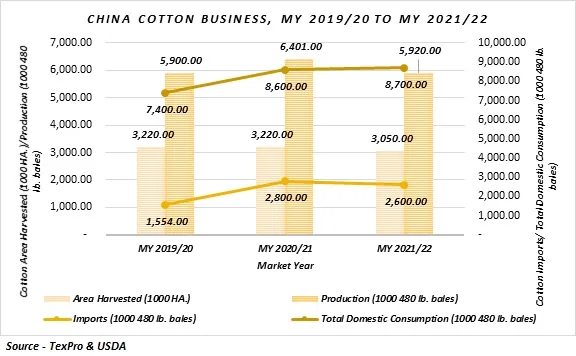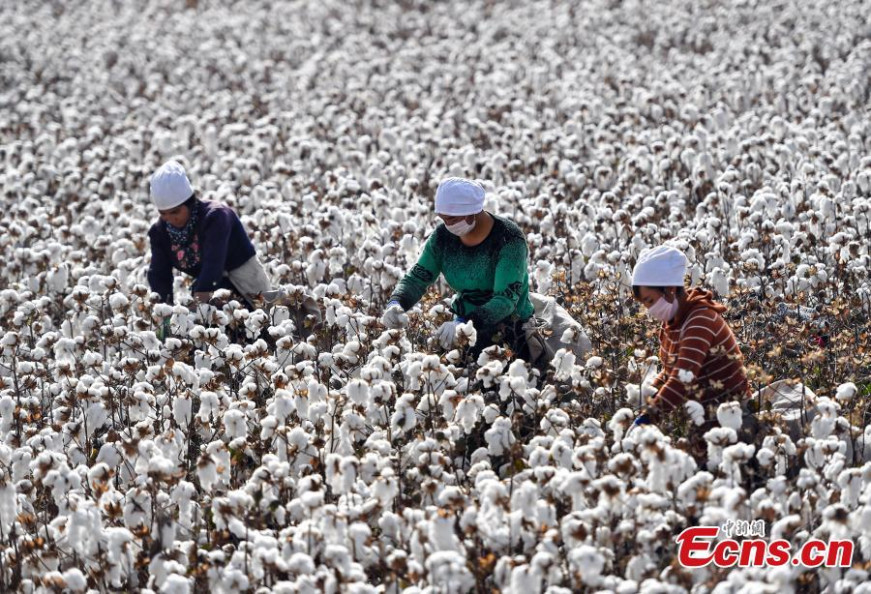Cotton consumption in China is expected to move up in market year (MY) 2021-22 (August 2021 to July 2022) due to the rising demand for textiles and clothing from domestic and overseas markets. However, cotton production in China is expected to decrease as the area of cotton harvested has dropped in Yellow River and Yangtze River regions of the country.
Cotton acreage remained stable in Xinjiang, but it dropped in the Yangtze River and Yellow River regions due to low profits from cotton farming. The share of Xinjiang cotton in China’s cotton production is expected to surge to 92 per cent in MY 2021-22.
In 2020, China’s state cotton reserve diminished to approximately 1.8 million metric ton. Hence, the government announced plans to purchase 500 kilo metric ton of Xinjiang cotton for the state reserve in late 2020. However, the purchase was cancelled because of high prices of domestic cotton.
According to experts, the government of China is expected to replenish the state cotton reserve with imported cotton. Sale of approximately 600 kilo metric ton of reserve cotton started on July 5, 2021, and about 350 kilo metric ton was sold in auctions by August 24.

The cotton area harvested in China was 3.22 million hectares in MY 2019-20 as well as in MY 2020-21, according to Fibre2Fashion’s market analysis tool TexPro. It is expected to decrease by 5.28 per cent to 3.05 million hectares in MY 2021-22.
The cotton production of the country went up from 5.90 million 480 lb bales in MY 2019-20 to 6.40 million 480 lb bales in MY 2020-21, recording a rise of 8.49 per cent. But it is expected to move down by 7.51 per cent in MY 2021-22 to 5.92 million 480 lb bales.
As for the imports, China imported 1.55 million 480 lb bales of cotton in MY 2019-20, which went up by 80.18 per cent to reach 2.80 million 480 lb bales in MY 2020-21. However, the exports are. expected to reduce by 7.14 per cent in MY 2021-22 to 2.60 million 480 lb bales.
The total domestic cotton consumption of the country was 7.40 million 480 lb bales in MY 2019-20, which rose by 16.22 per cent to 8.60 million 480 lb bales in MY 2020-21, according to TexPro. It is further expected to increase slightly by 1.16 per cent in MY 2021-22 to 8.70 million 480 lb bales.


